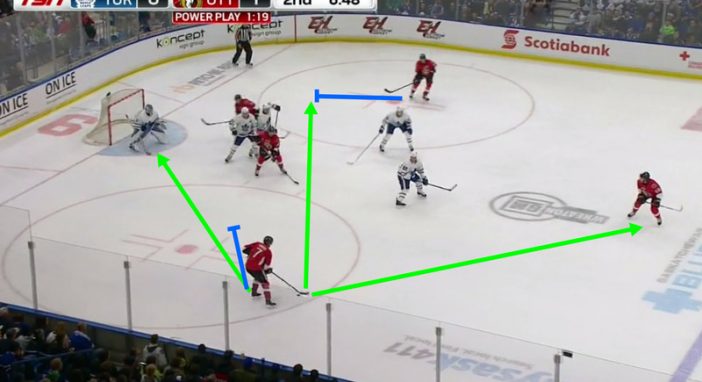Everyone has a well-known dilemma. It arises in every match of the team sport and is often a cause for conflict among players. “If you would give me, we would win” – so offended partners say. If the player did not give the pass, and threw at the gate, and unsuccessfully, then his opinion usually changes. “We had to give the pass.” Very often the trainer is connected to the discussion, unless he is its initiator. There goes and those who did not give. Because he did not score. And to those who gave the pass.Because he did not score the one to whom they gave the pass. And once again to the one who gave the pass, if he did not pass. Because they did not score. In a word, this topic is the traditional cause of nervous stress in game sports.
Suppose that the player is at the point from which the probability to score is estimated by the number R (1). He can throw himself. But he gives the pass to the player, who after the pass can throw from the point R (2). This point is closer to the gate and R (2)> R (1). Above we have already estimated the probability of transmission. We presented the probability of passing a transfer number γ, which in turn is a product of the probabilities of winning each of the martial arts around this transfer. If we treat all these single combats with one number, then the dilemma to give or pass will gain a concrete mathematical condition:
P * R (2)> R (1)
The increase in the probability of hammering in the case of transfer must, at least, cover the reduction in the chances of its passage. It is this inequality that different aspects of unrealized chances are assessed differently. However, the question has a different aspect. And was it worth to throw, beat at the gate? Was it necessary to come closer? Do I have to beat more often on goal or do it less often? Repeatedly you can observe situations when players “flirt”. Most often this happens with children’s teams, however, and high-end teams often want to score already for sure. The point is that the advantage in the won single combats corresponded to the advantage in the sum of the values of the comparative effectiveness of the strikes against the goal. Suppose that one team wins another twice as many martial arts. At the same time, she “hit” at 2.1 goals for all hits, and her opponent “hit” at 1.5. It is obvious that 2,1 / 1,5 <2/1.Therefore, unless the team plays very finely, the cost of each action of both sides is approximately the same, in this case it is necessary to beat the team more often with the advantage in the won single combats.
Polozov A.A. Ranking in hockey: are the trainer’s estimates accurate? / A.A. Polozov, E.G. Shurmanov // Theory and practice of physics. Culture: 2012. – N 5. – P. 45-49.
Rating in sport: yesterday, today, tomorrow / AA Polozov. – M.: Soviet sports, 2007 –




 06.04.2017
06.04.2017






